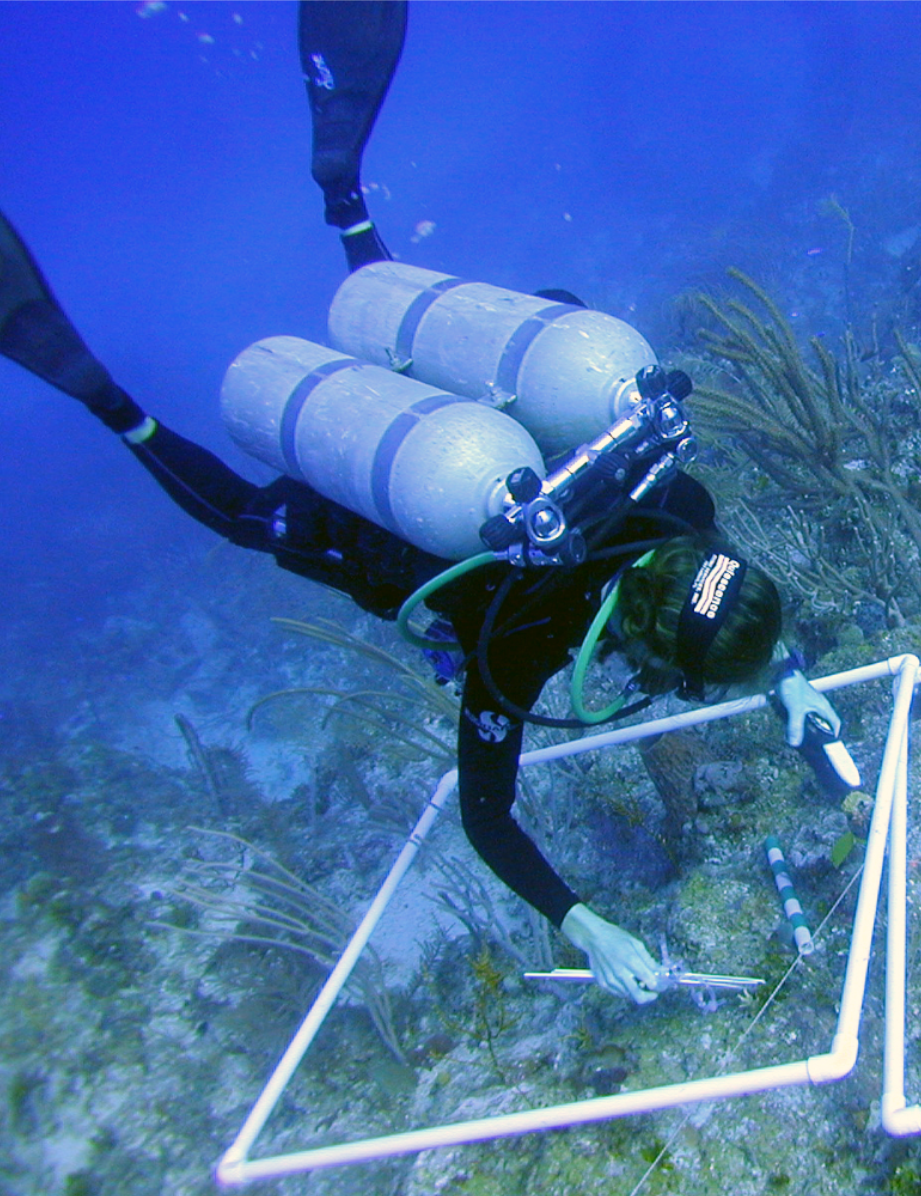Dauphin Island Sea Lab offers Scientific Dive Training Programs
January 1, 2018
Scientific diving is a tool used by researchers, federal and state agencies, museums/aquariums, and some consulting companies to perform workplace diving operations with the objective of collecting data for scientific or educational purposes. In order to understand what scientific diving is, we first need to take a step back and discuss the entire diving industry. There are two general categories into which all diving can be sorted, recreational and commercial. Scientific diving is a subset of commercial diving, officially established in 1985 by OSHA as a partial exemption to the commercial diving standard.
Commercial diving includes all diving activities where the participants are paid for their work. Because there is an employee/employer relationship in commercial diving, oversight, safety regulations and training requirements are dictated by a regulatory agency, such as OSHA in the United States.
Scientific dive training at DISL is offered to any MESC member requiring dive operations for their research in accordance with AAUS standards. To be accepted into the program, applicants must submit an application, hold at a minimum, an open water recreational SCUBA certification, pass a medical examination, pass a swim test, demonstrate appropriate levels of underwater proficiency with equipment and dive skill, acquire and maintain emergency care training. Once all prerequisites are met, the diver in training (DIT) must complete a cumulative total of a minimum of 100 hours of practical and theoretical dive training, and successfully pass a written examination.
Detailed information on training topics can be found in the DISL dive manual. Once the training is complete, working dives can be conducted to a depth of 30 feet, however, divers have the option to progress to deeper depth levels by completing a specified number of supervised dives to the next depth level (Table 1). Once certified, the scientific diver is responsible for maintaining any certifications that may expire (i.e. emergency care training), log a minimum of 12 dives during any 12 month period including at least one dive to their deepest depth certification level, and pass medical examinations at intervals determined by their age.
Dive training is continuously ongoing at DISL based on the needs of the researchers. Each year, new graduate students join the Sea Lab and new research projects start up; this means that at any given time, 3-4 people are working toward their scientific diver certification. Under normal circumstances, it takes about 1 year to complete the training, but it is possible to finish much more.
| Depth Rating |
# of Dives |
Prerequisite |
Specific Criteria |
| 60 |
12 |
30 foot certification |
Minimum 4 hours dive time |
| 100 |
4 |
60 foot certification |
Demonstrate use of dive tables |
| 130 |
4 |
100 foot certification |
Demonstrat use of dive tables |
| 150 |
4 |
130 foot certification |
Demonstrate understanding of deep diving physics |
| 190* |
4 |
150 foot certification |
Demonstrate understanding of deep diving physics |
Table 1: Depth Tables and Number of Dives Required
Link to DISL Scientific Diving Manual
http://www.disl.org/images/uploads/DISL_Standards_2016.pdf
